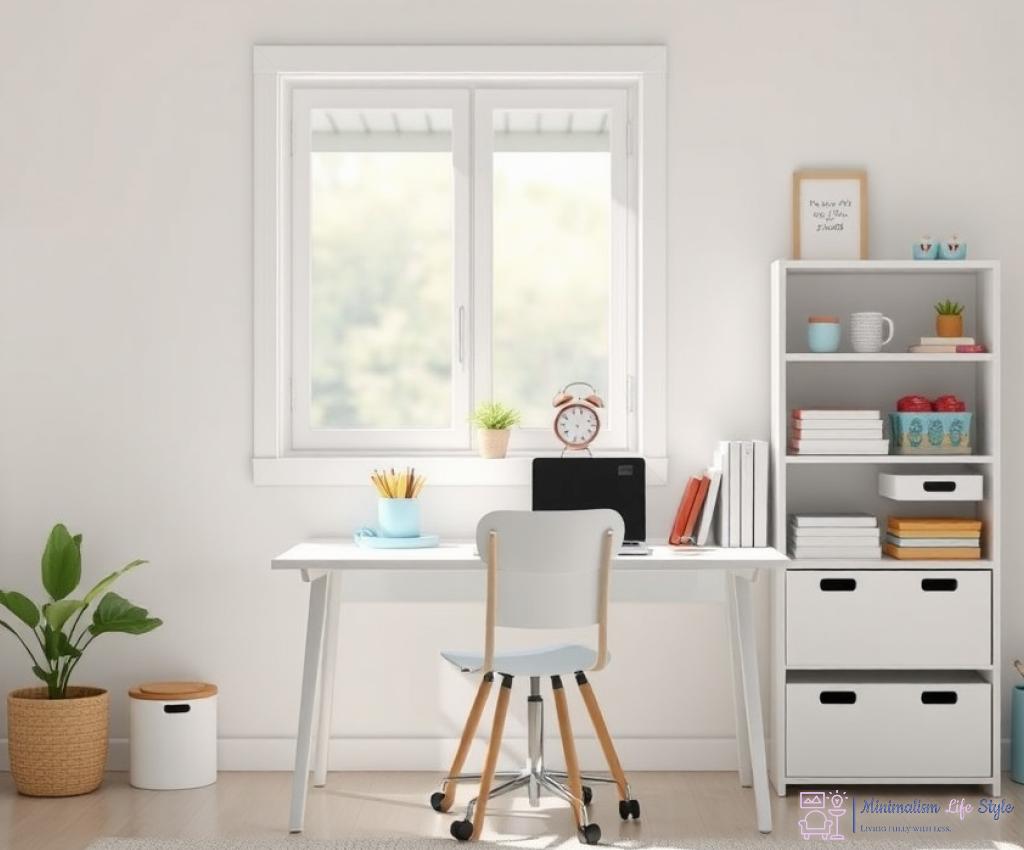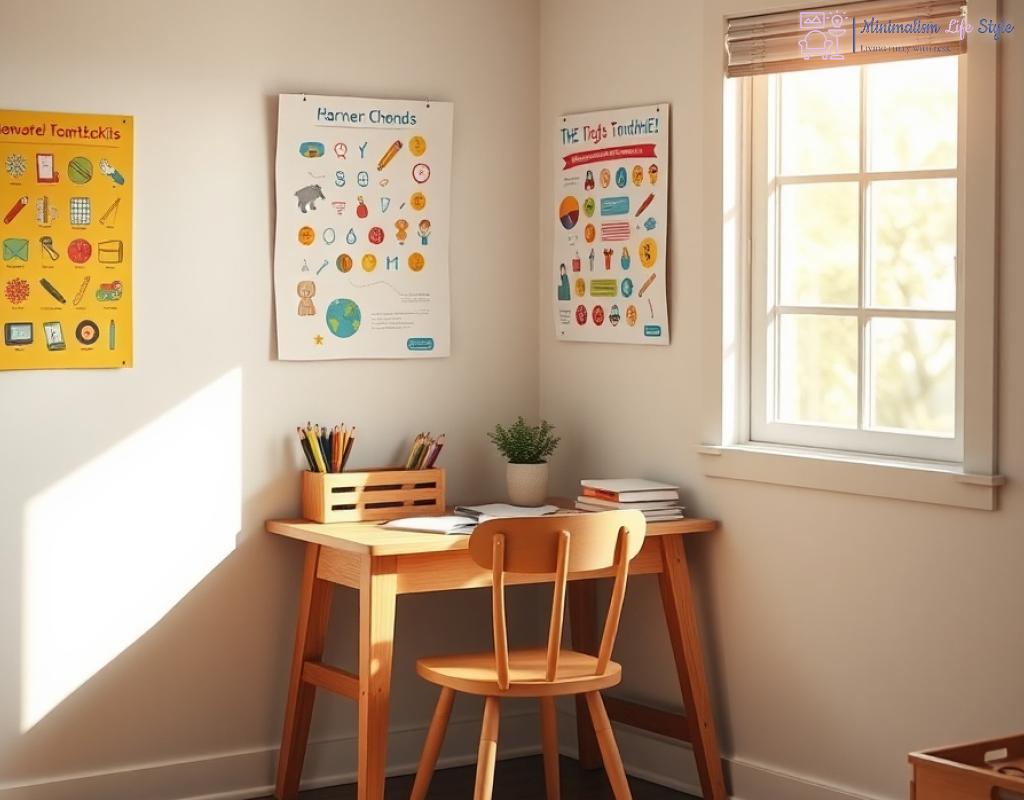The Power of Less: Embracing Minimal Homework
In an age where children are overwhelmed by an abundance of information and tasks, the notion of minimal homework emerges as a beacon of clarity. By reducing the amount of homework assigned, we empower kids to focus on what truly matters: understanding and engaging with the material. Minimal homework not only alleviates stress but also fosters a deeper love for learning, allowing students to explore subjects at their own pace and in their preferred styles.
Imagine a world where homework is streamlined and efficient. This transformation begins with the concept of intentionality in assignments. Instead of piles of worksheets, educators can opt for quality over quantity, providing tasks that encourage critical thinking and creativity. The shift towards a minimal homework approach can revolutionize the way students perceive their educational responsibilities.
- Quality Assignments: Tasks that promote deeper understanding rather than rote memorization.
- Time for Exploration: Students can delve into projects that interest them, fostering a passion for learning.
- Family Engagement: Less homework allows for quality family time, promoting collaborative learning environments.
Creating a minimal homework station at home can significantly enhance a child’s learning experience. This station should be a dedicated space that minimizes distractions and promotes focus. By incorporating simple tools and resources, parents can set the stage for effective study habits. Here’s a quick table to summarize the essential components for a minimal homework station:
| Component | Description |
|---|---|
| Comfortable Workspace | A quiet, well-lit area with a desk and chair to encourage focus. |
| Organizational Tools | Simple folders and containers to keep materials tidy and accessible. |
| Essential Learning Materials | Basic supplies like pencils, paper, and a computer for research. |
Creating a Distraction-Free Homework Zone

In the quest for effective learning, the environment in which students engage with their homework plays a crucial role. A distraction-free homework zone is imperative for fostering concentration and enhancing the quality of work produced. By creating a serene space, parents can help their children cultivate a sense of responsibility and ownership over their learning journey.
Establishing a tranquil homework zone involves more than just finding a quiet corner in the house. It requires a thoughtful approach that considers the unique needs of each child. Factors such as lighting, noise levels, and even the arrangement of furniture contribute significantly to minimizing distractions. For instance, using soft, warm lighting can reduce eye strain and create a calming atmosphere conducive to focus.
Every child is different, and their homework zone should reflect their individual preferences and learning styles. Incorporating elements that resonate with your child’s personality can greatly enhance their engagement and motivation. For example, allowing them to choose their own desk, chair, or even wall colors can instill a sense of pride in their workspace.
Additionally, minimizing distractions extends to technology as well. While computers and tablets can be invaluable learning tools, they can also serve as gateways to distraction. Setting up parental controls or using applications that limit access to non-educational sites during homework time can help maintain focus. Thus, a balance must be struck between leveraging technology and ensuring it does not divert attention from learning.
Essential Tools for Effective Learning

Establishing a minimal homework station is just the beginning; equipping it with the right tools is where the magic truly happens. An effective learning environment hinges on the availability of essential resources that not only facilitate homework completion but also spark curiosity and creativity. By thoughtfully selecting and organizing these tools, parents can create a space that promotes engagement and fosters a love for learning.
Creating an inviting and productive homework space involves more than just a desk and chair. Here’s a curated list of indispensable tools that can dramatically enhance a child’s learning experience:
- Interactive Learning Materials: Incorporate educational games, puzzles, or kits that challenge critical thinking and problem-solving skills.
- Art Supplies: A selection of colored pencils, markers, and paper can encourage creative expression while completing assignments.
- Reference Books: A small library of age-appropriate reference books can support research and inspire deeper dives into interesting topics.
- Technology Tools: Ensure access to a reliable computer or tablet for online research, along with educational software that enhances learning.
- Timers and Planners: Using timers can help children manage their time effectively, while planners assist in organizing tasks and deadlines.
Beyond the physical tools, the atmosphere of a minimal homework station is crucial for effective learning. Factors such as ambiance, organization, and accessibility can significantly impact a child’s ability to concentrate and absorb information. Here’s how to optimize the environment:
| Aspect | Recommendation |
|---|---|
| Lighting | Use soft, adjustable lighting to reduce glare and enhance focus. |
| Organization | Implement labeled bins and folders to keep materials organized and easily accessible. |
| Comfort | Choose ergonomic furniture that promotes good posture and encourages longer study sessions. |
By integrating the right tools and creating a supportive environment, parents can transform their children’s homework experience into one that not only meets academic expectations but also nurtures a lifelong passion for learning. This holistic approach is the cornerstone of establishing a minimal homework station that truly empowers kids.
Balancing Play and Study: A Kid’s Guide
In the bustling world of childhood, where imagination knows no bounds, it’s essential for young learners to strike a balance between play and study. While homework and academic responsibilities are crucial for growth, the joy of play is equally important in shaping a well-rounded individual. Understanding this balance not only enhances learning but also promotes a happier and more engaged child. By prioritizing both aspects, children can develop a genuine love for learning while enjoying the freedom of play.
Rather than viewing play and study as opposing forces, they can be integrated into a harmonious routine. Creative learning activities can be designed to incorporate elements of play, making homework feel less like a chore and more like an adventure. For example, incorporating educational games or project-based learning can allow children to explore subjects in a fun and interactive manner. This approach transforms the minimal homework station into a vibrant learning environment, where curiosity thrives and knowledge is gained effortlessly.
Establishing a structured routine that allocates time for both study and play can be a game-changer for children. By scheduling specific periods for homework completion followed by dedicated playtime, kids can learn to manage their time effectively. This structure helps them focus during study sessions, knowing that they have something to look forward to afterward. Moreover, play has been shown to enhance cognitive skills, improve problem-solving abilities, and foster social interactions, all of which are critical for academic success. Therefore, a balanced routine not only supports educational goals but also nurtures emotional and social development.
Fostering Independence: Guiding Kids in Homework
In today’s educational landscape, fostering independence in children is not just a goal; it is an essential component of their growth as learners. When we create a minimal homework station, we do more than simply provide a physical space for study. We lay the groundwork for children to take charge of their own learning journey. By guiding them through the process, we empower them to develop self-reliance, critical thinking skills, and a sense of ownership over their education.
To nurture this independence, it’s vital to shift from traditional methods of oversight to a more supportive approach. This means stepping back and allowing kids to navigate their assignments while providing gentle guidance when needed. Encouraging them to ask questions, explore resources, and seek answers independently not only boosts their confidence but also fosters a deeper understanding of the material.
One of the most effective ways to promote independent learning is by encouraging self-discovery. When children are given the freedom to explore topics that pique their interest, they develop a sense of curiosity that drives their learning experience. For instance, if a child is assigned a research project, instead of providing them with a list of sources, guide them on how to find reputable information online or in books. This method transforms homework from a mundane task into an exciting adventure where children can uncover new knowledge. By doing so, we are not just helping them complete assignments; we are teaching them how to become resourceful learners.
While independence is crucial, it is equally important to provide structure in the homework process. Establishing a routine can significantly aid in developing a child’s self-management skills. For example, setting specific times for homework and breaks can help children learn to balance their time effectively. Furthermore, incorporating checklists or visual schedules can serve as reminders for what needs to be accomplished, allowing children to feel a sense of achievement as they complete tasks. This structured approach helps them build confidence in their abilities while still feeling supported.
Moreover, it’s beneficial to create a feedback loop. Encouraging children to reflect on their completed work or discuss challenges they faced during their homework reinforces learning and allows them to articulate their thought processes. When children understand that mistakes are part of learning, they become more resilient and willing to tackle future challenges. By fostering a safe environment where they can express their thoughts and feelings about their homework, we help them cultivate a growth mindset.
| Aspect | Independent Learning | Structured Guidance |
|---|---|---|
| Focus | Encourages exploration and curiosity | Provides a routine and framework |
| Confidence | Builds self-reliance through discovery | Offers support and feedback |
| Responsibility | Empowers children to take ownership | Helps manage tasks effectively |
By integrating these strategies into the minimal homework station, we can create an environment where children not only complete their assignments but also develop the skills necessary for lifelong learning. In doing so, we pave the way for them to become confident, independent thinkers, ready to tackle the challenges of the future.




